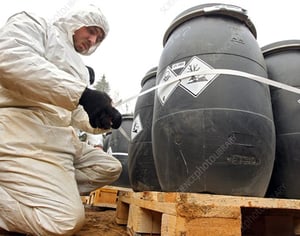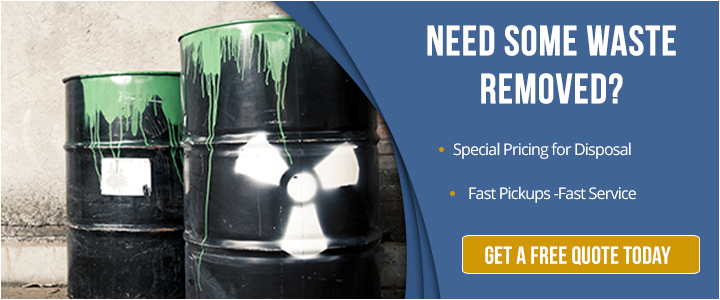Hidden within the walls of countless older buildings, a silent danger lurks. Asbestos, once heralded for its fire-resistant and insulating properties, is now associated with the health risks it poses.
Asbestos is often discovered during building inspections in insulation, roofing shingles, floor tiles, textured ceilings and more. However, asbestos-containing materials aren’t always easy to identify by sight alone since fibers are often embedded within other substances.
Asbestos can even be found in soil, though the cause isn’t always manmade. Because asbestos is used in many building construction materials, when these items are disposed of, asbestos can enter the ground soil. Asbestos is also naturally occurring, however. Made up of thin, microscopic silicate fibers, naturally-occurring asbestos can be released from rocks or soils when a ground disturbance occurs.
For construction companies, abatement companies and environmental consultants, the pivotal concern is what to do with asbestos-containing materials once they are extracted.
While many states classify asbestos as non-hazardous waste, in California, asbestos is considered hazardous. State laws also say that asbestos waste weighing more than 50 pounds requires transportation by a certified hazardous waste disposal company.
Here is some important information you need to know about hazardous waste disposal during asbestos abatement projects.
How Is Asbestos Waste Defined?
Responsible for hazardous waste control, the California Environmental Protection Agency, or CalEPA, defines asbestos waste as “having more than 1% asbestos and being friable.”
waste as “having more than 1% asbestos and being friable.”
Fibers can become airborne and easily inhaled when these asbestos-containing materials are disturbed. Long-term exposure to asbestos fibers can lead to health problems like severe lung diseases, including lung cancer and mesothelioma.
Due to the health hazards associated with asbestos exposure, states like California have implemented strict regulations and guidelines for its handling, removal and disposal to minimize risks to human health and the environment. One of these rules is that asbestos waste can only be placed in landfill sites approved for hazardous waste.
Who Can Transport Asbestos Waste?
After removing asbestos from a site, registered hazardous waste disposal companies must transport any asbestos waste totaling more than 50 pounds. They must take the waste to an approved treatment, storage or disposal facility (TSDF).
If, during the abatement process, you generate less than 50 pounds of asbestos waste, you are exempt from this requirement as long as you:
- Transport the waste in closed containers that are packed in a manner that prevents them from tipping over, spilling or breaking during transport
- Do not mix in other hazardous waste materials within the same container
- Are the producer of that hazardous waste, and you produce no more than 100 kg of hazardous waste in any month or no more than 1,000 kg at any one time
As an asbestos abatement company, focusing on the third requirement above is particularly important if you perform several jobs.
Any hazardous waste generated during asbestos abatement, that is transported to a disposal site must have a properly completed Uniform Hazardous Waste Manifest. The generator must also obtain an EPA Identification number to complete the manifest.
How Must Asbestos Waste Be Contained?
As we mentioned above, asbestos waste must be contained properly during transport. The waste can be sealed in a leak-tight, non-returnable container from which fibers cannot escape (such as wetting the fibers to prevent them from blowing in the wind).
In the case of bulk wastes that may not fit into sealed containers without risking breakage, wastes can be placed in sealed, leak-tight wrapping after a wetting process. Trailers or drop boxes that hold waste must be lined with plastic sheeting. Trailers and drop boxes should be covered with a tarp.
What About Soil Contaminated With Asbestos?
The California Air Resource Board (CARB) implemented the Airborne Toxic Control Measures for projects that disturb soil in areas of the state where asbestos may be present. These projects may include construction, grading and surface mining.
disturb soil in areas of the state where asbestos may be present. These projects may include construction, grading and surface mining.
Before construction begins, project operators must apply for an Asbestos Dust Mitigation Plan or test any requirements by undergoing a geologic evaluation through an air district office. Your plan should include emergency protocols if asbestos is unearthed in the soil.
Training workers prior to beginning a project is also important and should include areas like personal protective equipment (PPE) to protect against hazardous levels of exposure.
Even if no asbestos is found at the beginning of digging, it’s also important to perform ongoing asbestos sampling. If asbestos is found at any point, you may need to dispose of it properly. Some projects may allow for contaminated soil to remain on the property if it is in a manageable and safe long-term area. Any enforcement agency, such as the EPA, must approve this. If approval isn’t granted, the soil must be removed.
What Should A Disposal Company Offer?
If testing samples reveal asbestos contamination, it’s important to work with a certified company that will ensure your generated waste arrives at its destined disposal facility.
A reputable hazardous waste disposal company should:
- Have the ability to identify waste streams through profiling and testing
- Transport your waste to the proper recycling and disposal sites
- Offer evidence that your waste has been properly disposed of
- Provide the documentation and information necessary for transport, including manifests
- Offer a walk-through program to evaluate your waste procedures
Because you are responsible for the toxic waste you generate, ensuring that the vendor you choose is legally allowed to transport asbestos waste in California is important. A hazardous waste transporter must be on the California Department of Toxic Substances Control’s Registered Hazardous Waste Transporter Database. Remember that a hazardous waste transporter registration is valid for only one year, so conducting annual environmental audits of vendors handling your waste is a good idea.
With any project, budget is often a top concern. The best transporter will also provide a free quote ahead of time and be upfront with you about disposal costs. Transparency in pricing is key to forging a trusted partnership, and trust is indispensable when it comes to hazardous waste disposal.


Comment